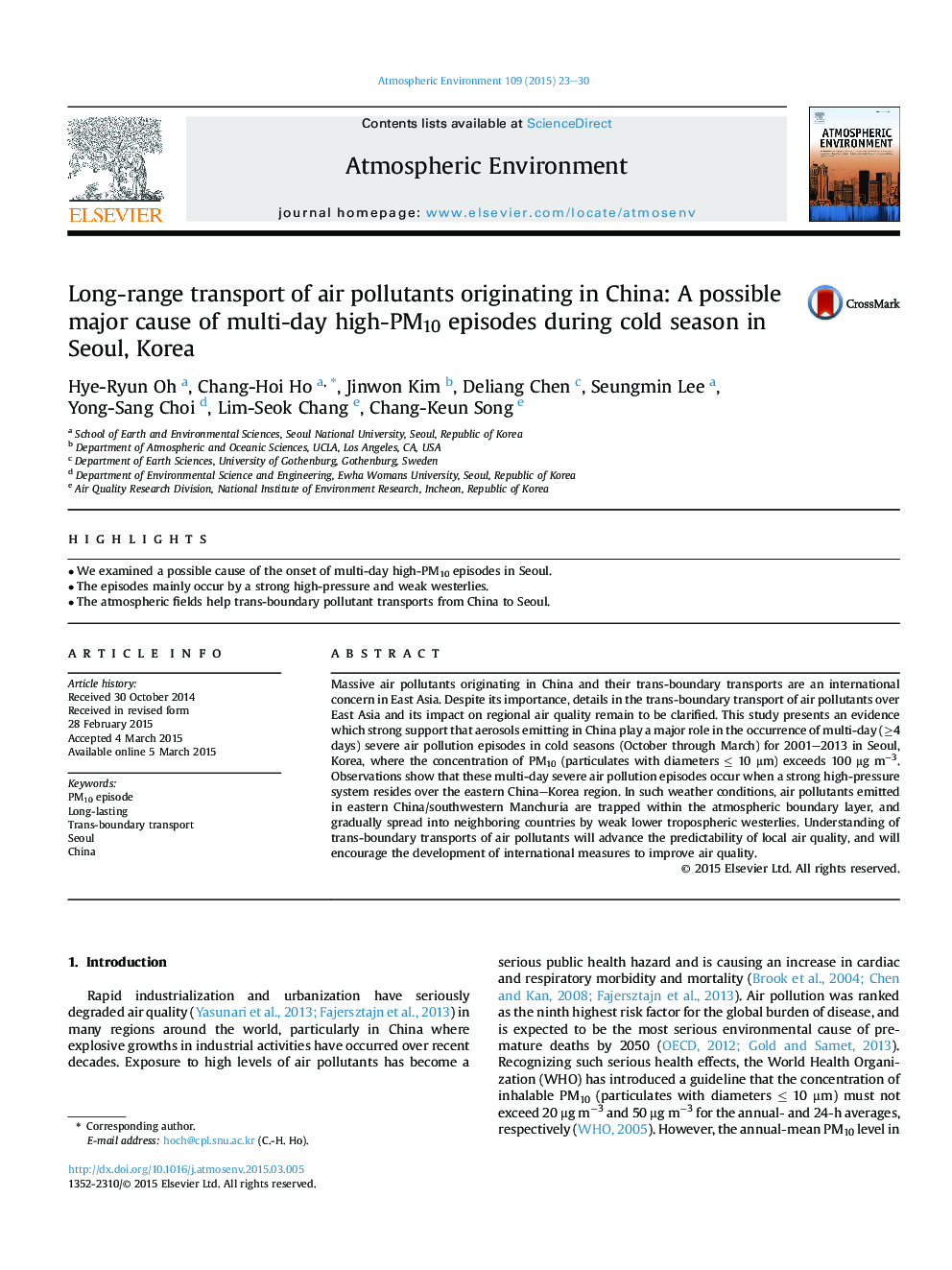| Article ID | Journal | Published Year | Pages | File Type |
|---|---|---|---|---|
| 6338196 | Atmospheric Environment | 2015 | 8 Pages |
Abstract
Massive air pollutants originating in China and their trans-boundary transports are an international concern in East Asia. Despite its importance, details in the trans-boundary transport of air pollutants over East Asia and its impact on regional air quality remain to be clarified. This study presents an evidence which strong support that aerosols emitting in China play a major role in the occurrence of multi-day (â¥4 days) severe air pollution episodes in cold seasons (October through March) for 2001-2013 in Seoul, Korea, where the concentration of PM10 (particulates with diameters â¤Â 10 μm) exceeds 100 μg mâ3. Observations show that these multi-day severe air pollution episodes occur when a strong high-pressure system resides over the eastern China-Korea region. In such weather conditions, air pollutants emitted in eastern China/southwestern Manchuria are trapped within the atmospheric boundary layer, and gradually spread into neighboring countries by weak lower tropospheric westerlies. Understanding of trans-boundary transports of air pollutants will advance the predictability of local air quality, and will encourage the development of international measures to improve air quality.
Related Topics
Physical Sciences and Engineering
Earth and Planetary Sciences
Atmospheric Science
Authors
Hye-Ryun Oh, Chang-Hoi Ho, Jinwon Kim, Deliang Chen, Seungmin Lee, Yong-Sang Choi, Lim-Seok Chang, Chang-Keun Song,
